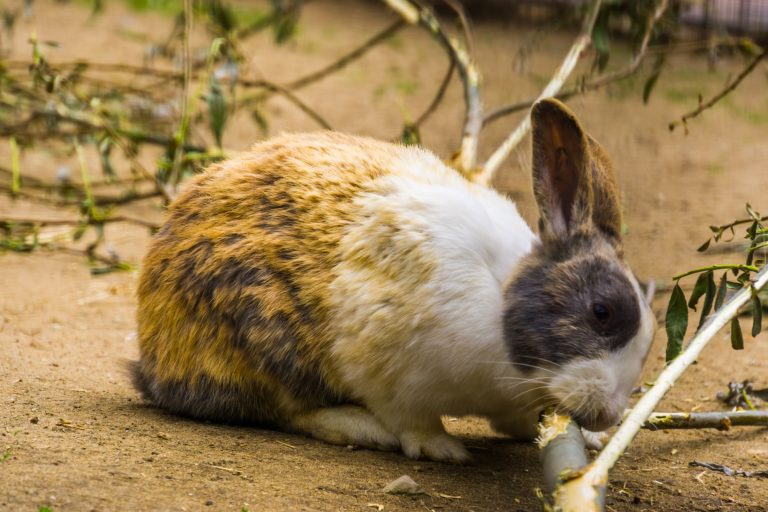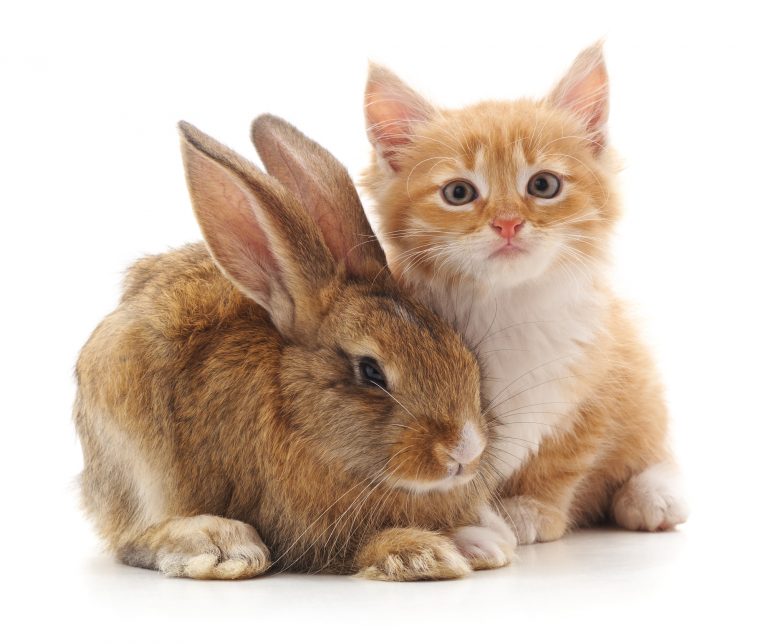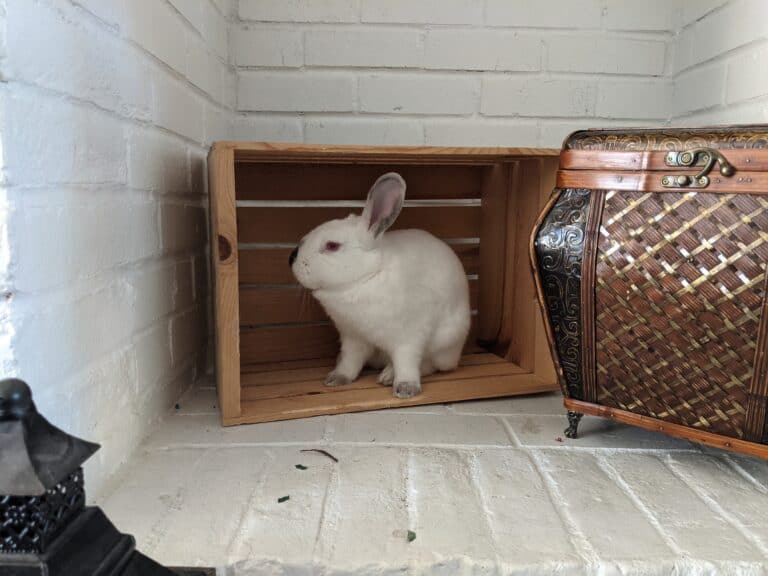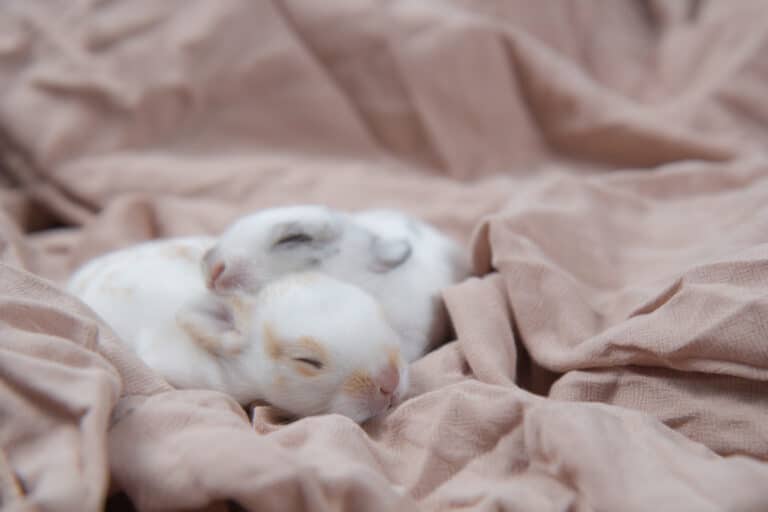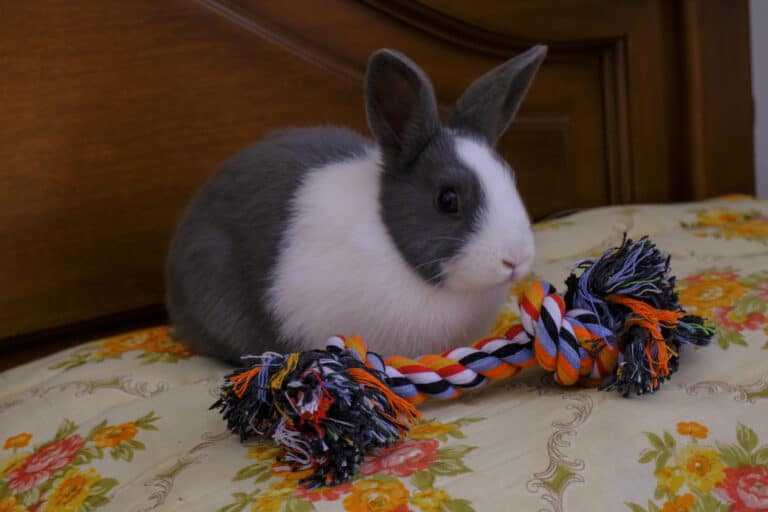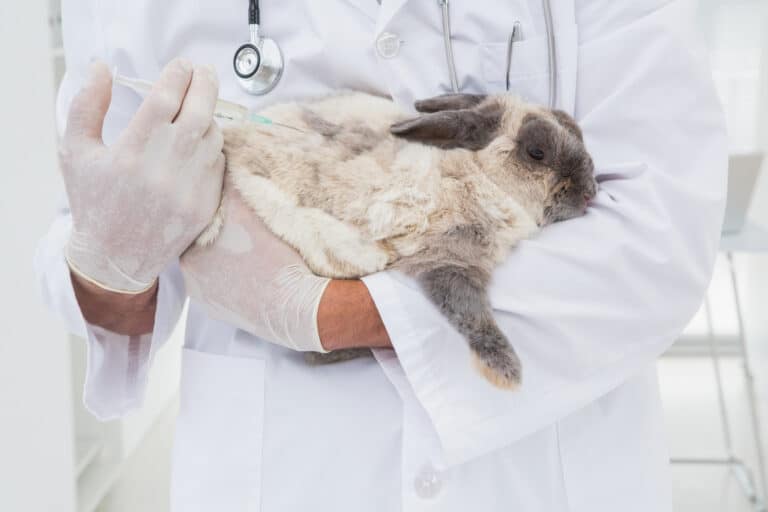How to Care for Molting Rabbits: Shedding All That Fur!
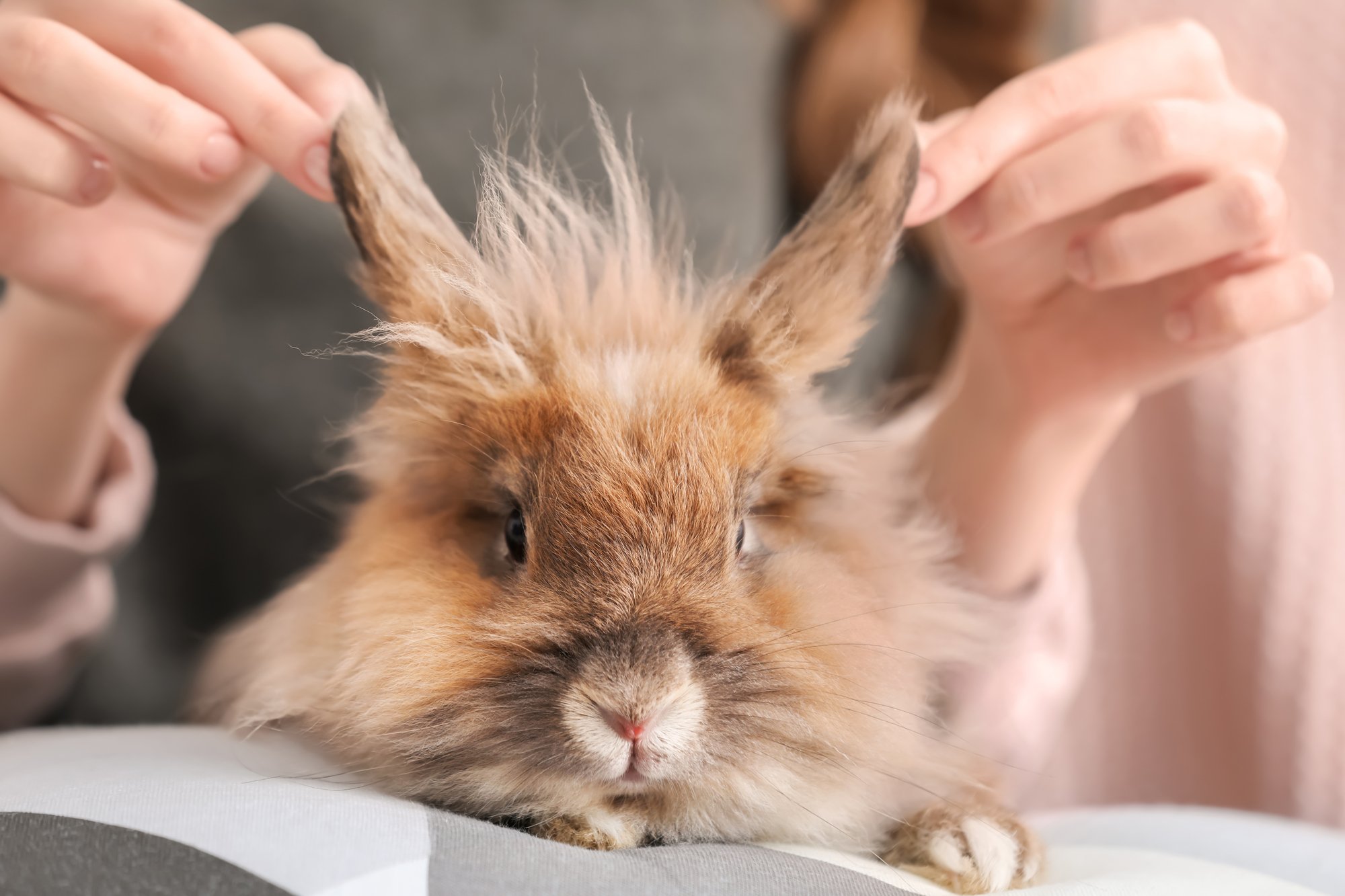
Rabbits spend a lot of time grooming themselves. It may even seem as if every time you see your bun, he is grooming himself. That’s because rabbits are clean animals and they have so much fur! But although your pet does a great job of keeping himself neat and tidy, you may wonder, do rabbits molt and is that what all the fur loss is called?
Because your rabbit sheds (and with indoor rabbits, it can seem excessive), rabbit grooming should become as much part of your routine as it is your pet rabbits. It not only makes your rabbit’s coat clean and shiny, but it also helps keep him in good health.
Why Rabbit’s Molt: Key Reasons Why They Loose Fur
Domestic rabbits and wild rabbits go through periods of shedding their thick winter coat and their summer coat, just like any animal would. The difference with domesticated bunnies is they may seem to molt all the time. But typically they will go through one big molt when baby rabbits lose their baby fur, almost to the point of bald patches of fur loss and then their adult fur comes in.
Then the molting process happens again as seasons change.
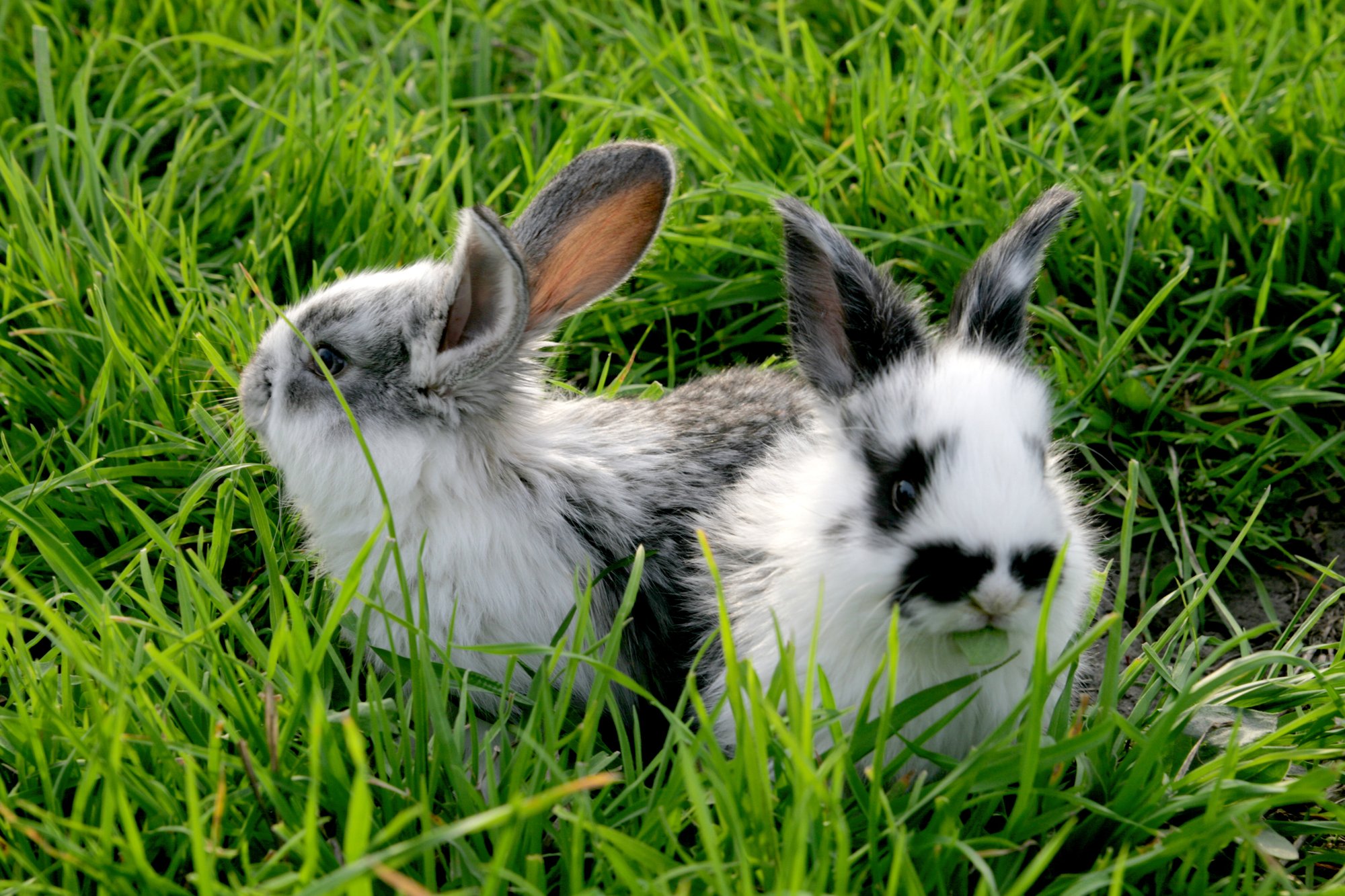
Grooming: an Essential for a Molting Rabbit
There are excellent reasons why you should make it a habit to groom your rabbit:
1. To Keep your Pet Bunny Healthy
Sure, your bun can keep himself clean, but grooming makes him swallow some fur. If you don’t lend a little help and get rid of all that loose hair, he may end up ingesting a significant amount, which can lead to digestive tract issues and health problems like gi stasis and even fur mites.
Regular brushing also prevents the formation of knots and tangles, which, in turn, can lead to skin irritations, like flaky skin, or even a fungal infection, since a rabbit’s skin is sensitive. Dirty, matted fur makes your pet prone to flystrike, a horrible condition caused by fly larvae.
On top of that, grooming gives you the chance to regularly check your rabbit’s body for bumps and lumps, skin conditions, and signs of parasitic infestation.
2. To Make your Pet Look Great
Brushing removes shed hair, prevents tangles, and makes the rabbit’s fur look sleek and shiny as it distributes the natural oils through the strands.
3. It’s a Good Bonding Opportunity
Regular grooming lets your pet get used to being held. Most rabbits enjoy the social interaction with their rabbit owners and look forward to the grooming process once they’ve learned that it’s a positive experience. This is especially true if you start with young rabbits. Maintaining their fur coat will come with a lot less stress if they are started young.
How Often Should You Groom?
This will depend on the type of rabbit you have.
With short-haired buns, a once-a-week brushing should be enough. With long-haired breeds, like the angora rabbits or ones with thicker fur like the mini-lops, a daily brushing of their long fur is a good idea.
That’s when they’re going through light molts. You will need to groom them more often during the big shedding seasons for shedding their fur coat of old fur, which occurs roughly the same time of year every year, every time the temperature changes, or about every three months.
The Tools You Need
The right tools will make the job easier, and getting good quality ones will be a great investment. Remember that rabbits have sensitive skin, so choose tools specifically made for their kind and make sure they’re comfortable for your pet.
Although fur parents swear by different equipment, you’ll likely need the basic ones like the following:
- Rubber pimple brush or mitt: A rubber brush or mitt not only effectively removes a fair build-up of hair when your bun sheds, but it’s also gentle on the skin.
- Wide-toothed comb: This works best for long-haired rabbits, but you also need combs for short-haired buns during molting season. Use it carefully to avoid hurting your pet.
- Soft brush: Rubber brushes are used when your bun sheds, while regular brushes are for general grooming. You’ll want a good quality brush and the good news is there are several available in the market, so choosing the one that will work best for your rabbit can be challenging. Use the words soft and gentle as your guide.
- Mat rake: Sometimes called a flea comb. You’ll need this tool to remove stubborn knots and severely matted hair.
- Nail clippers: Rabbit grooming is not just about brushing. You’ll need to trim the nails, too, so you’ll want to keep a nail clipper on hand. Ordinary scissors or clippers for humans can split your pet’s nails and cause pain, so pick clippers made for rabbits.
- Cotton balls and cotton-tipped swabs: You’ll need these to clean your bun’s eyes and ears.
- Styptic powder: This powder substance will stop the bleeding caused by minor cuts and nail clipping.
Dealing with Matted Fur
It’s tempting to simply cut through the tangles with a scissor. But with this method, it’s very easy to nick your pet’s skin accidentally. The best way to deal with tangles is to gently separate and comb out the knot a little bit at a time. Be extra careful not to tug on the hair, as this can hurt your bun.
If you can’t take the tangles out, a visit to the groomer may be necessary.
Clipping Your Bunny’s Nails
Along with the once-a-week brushing, check your pet’s claws as well and trim them when needed using clippers meant for rabbits. Look closely at the nails and watch for a pinkish shadow inside. That’s the quick (a vein inside the nail).
Be careful not to cut the quick when trimming your bun’s claws. Nicking it will hurt your bun and cause bleeding. But if you accidentally damage the quick, don’t panic. Styptic powder will stop the bleeding. Just make sure you have some on hand before trimming your rabbit’s nails.
In the absence of styptic powder, you can use cornstarch or flour as emergency substitutes.
Or you can always opt for a quick trip to the vet for nail trimming!
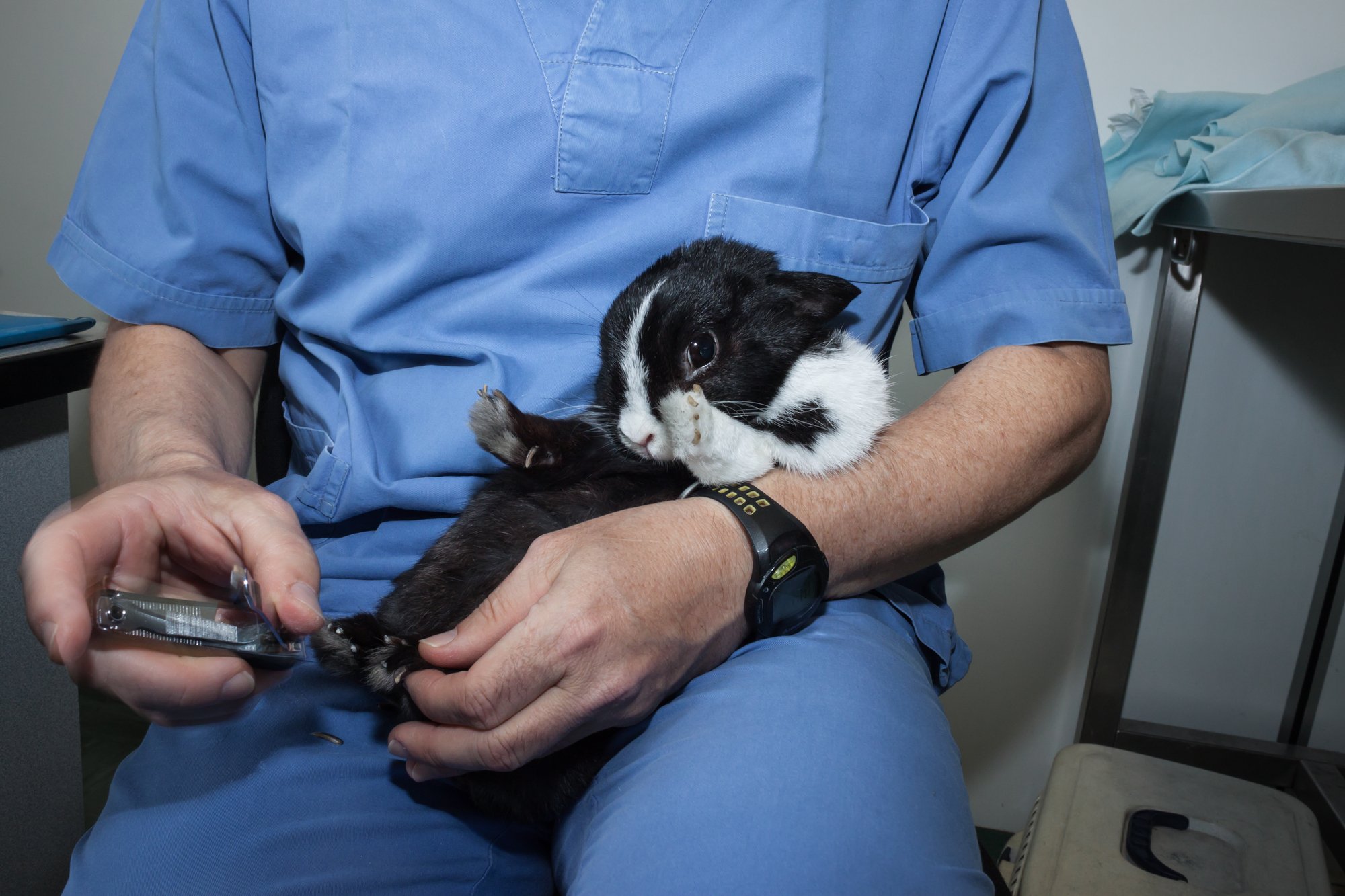
Should Bathing Be Part of Your Rabbit’s Grooming?
Rabbits should not be bathed unless it’s absolutely necessary. Most rabbits hate the water, and being wet stresses them out. Buns have been known to go into shock when they get wet. Moreover, it takes a while for their fur to dry, and having damp hair makes them susceptible to respiratory infections or even hypothermia.
If your bun really needs washing, such as when they soil their bottoms or hindquarters, spot cleaning is a better alternative to bathing. You do this by sprinkling cornstarch (don’t use talcum powder) on the soiled area and combing out the dirt. If the filth doesn’t come out, you can moisten a washcloth with a bit of water and dab at the grime while doing your best not to let the water reach your bun’s skin. When the fur is clean, set the dryer on the coolest setting and use it to dry the coat.
Should You Clean their Ears?
Check the ears as part of the weekly grooming regimen. Watch out for ear wax or dirt build-up, which you gently remove with a cotton ball. Don’t try to clear out all the wax, as ear wax plays a role in protecting your rabbit’s ears.
Also, don’t poke the ears with a cotton-tipped swab to avoid pushing the wax down and causing more problems.
Being a responsible bun parent means lots of brushing when they start molting. The extra effort will be worth it when you see your pet looking neat, clean, and happy.
Excessive Shedding and What’s a Normal Molt
Sometimes a rabbits sheds what can seem like an excessive amount. Most of the time, the amount of fur or hair loss, even if it seems like a lot, is considered normal in healthy rabbits. But if your rabbit is experiencing any of these signs of illness, it’s worthwhile to visit a veterinarian:
Behavior changes: If your rabbit is being overly aggressive or hiding all the time, there could be underlying health issues.
Loss of appetite: Even with molting season, an indoor rabbit getting his new coat should not cause them to stop eating.
Possible body temperature changes: Although this may be difficult to judge, a veterinarian can determine if there’s a problem.
Large bald spots: A normal rabbit’s adult coat will shed a lot of fur, but the new fur should come in fairly quickly.
Note on female rabbits: Female rabbits will tug and pull out a lot of hair when they are preparing for babies. So this could also be a cause of some excess shedding.
More on Rabbit Care
- How Long Do Flemish Rabbits Live: Giant Breed Facts
- Complete Guide to the Best Hay For Rabbits: Reviews & More
- Are Rabbits Rodents? Find Out More About These Small Mammals
- Is Oat Hay Good for Rabbits? Complete Guide to the Best Hay
- Why Do Rabbits Lick You? 11 Reasons for This Common Behavior
We hope you enjoyed this post! If you did, will you give it a share or two 🙂 Thank you! ~from Every Bunny Welcome


